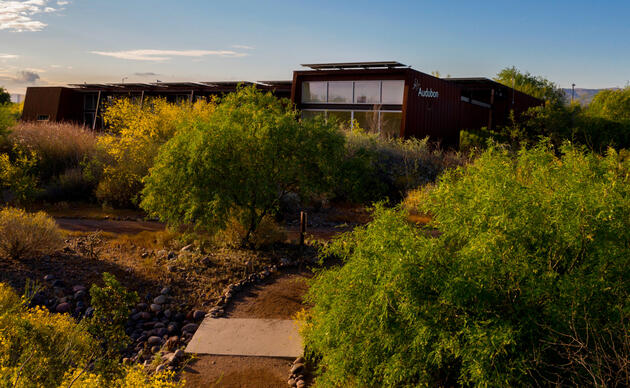by Laura Paskus
Churning along a 2,000-mile route from Colorado to the southern tip of Texas, the Rio Grande is a critical water source for millions of people, flora, and fauna in the Southwest. But drought and diversions have made it difficult for The Big River to live up to its name; in some stretches, like in the Middle Rio Grande near Albuquerque, New Mexico, the water has stopped flowing almost every summer since 1996, causing fish to suffocate, birds to relocate, and invasive trees to take over.
Part of the river’s problem is that water is continuously siphoned off by canals and groundwater pumps. But starting in 2016, a new partnership between Audubon New Mexico and Native American tribes—announced yesterday—will give the river exactly what it needs: water.
Earlier this year, after meeting with scientists and government officials, Audubon New Mexico decided it was time to address the river and surrounding ecosystems’ declining health. The group reached out to six Middle Rio Grande pueblos and offered to purchase or lease the water the tribes have stored in upstream reservoirs to bolster the Rio Grande’s flow during dry times.
But the Pueblo of Sandia had a better plan: Rather than sell, it volunteered to devote about 33 million gallons of its reservoir water next year to help reestablish a healthy river system—the first donation of its kind.
“With ever increasing demands put on the river, Sandia offers this water as a dedication to the inherent value the river has to all people and the habitat it supports,” tribal Governor Isaac Lujan said in a statement. “Sandia hopes this donation can be used as an example of what can be done for the health of the river and the community when stakeholders work together.”
The pueblo’s contribution, which will be released from El Vado Reservoir when water levels get drastically low, could provide relief for the cottonwood forests along the river’s banks and endangered species such as the Rio Grande silvery minnow and the Southwestern Willow Flycatcher. Listed for federal protection in 1995, the flycatcher depends on the river’s forested edge for its breeding and nesting habitat—habitat that’s been suffering in recent dry years. The Middle Rio Grande also houses two Important Bird Areas, which sustain migrating waterfowl and flocks of cranes in wetter times. Sharon Wirth, the freshwater program manager for Audubon New Mexico, says that by targeting areas that are prone to drying out, her team can focus on conserving critical nesting and breeding spaces for birds.
Wirth and the rest of the staff at Audubon New Mexico are very optimistic about their pilot program. Like many of the rivers in New Mexico, the Rio Grande suffers from the competing interests of states, cities, and farmers. That makes the gift from the Pueblo of Sandia all the more essential. “To be working with someone who is really just all about the river for the inherent value of the river—the intrinsic value of water in the river. There’s something really beautiful about that,” Wirth says.
The donation marks the first partnership between Audubon New Mexico and the pueblo. Already, the Pueblo of Isleta has followed suit, contributing a share of its stored water for next year. Other tribes may also join the program, either by donating or selling their stores to Audubon New Mexico, says Wirth.
With more hands on deck, and more water coming down the river, Wirth is hopeful the habitat will rebound. The donation has “unshackled the system to a certain extent,” she says, adding this is the first time the river’s surge hasn’t been directed by a state or federal agency. Instead, the pueblos and Audubon New Mexico are leading a project that has a shared vision: a healthier Rio Grande.
Correction: Due to an editing error, the article incorrectly stated that the water in the El Vado Reservoir is sourced from the Rio Grande.


